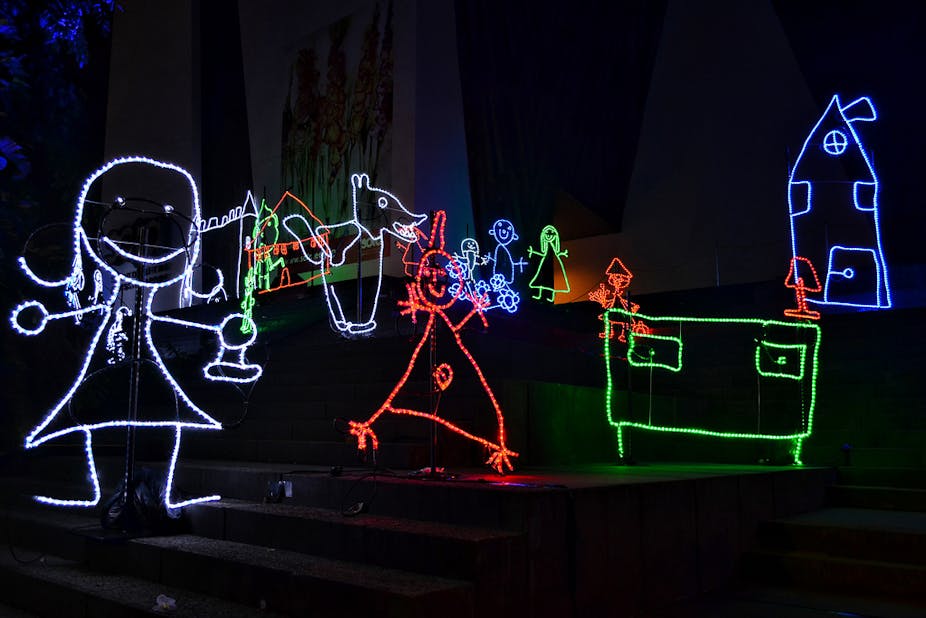The fifth edition of the Diagnostic and Statistical Manual for Mental Disorders (DSM-5), a classification system for mental disorders produced by the American Psychiatric Association for the past 60 years, was released on Saturday.
The manual has attracted criticism from across the board, from the British Psychological Society to the chair of the previous edition’s taskforce, Allen Frances and the director of the US National Institute of Mental Health.
Some of these criticisms centre around claims that psychiatry more generally is moving away from psychological theories and pursuing an increasingly neuroscientific approach to mental disorders. And that this approach is crowding out the central role of therapy in mental health.
Some have gone as far to say that we are risking the bio-psycho-social model of mental illness in favour of a “bio-bio-bio” model that relegates human despair to physiological functioning.
Australian researchers have also come under similar criticism in the past few years, particularly for former Australian of the year Patrick McGorry’s proposed “psychosis risk syndrome” for adolescents.
While there is value in McGorry’s vision for early intervention to prevent serious mental health problems in young people, there are concerns about the dangers of mis-identification, and the effect that a mistaken diagnosis and resulting stigma might have on young people.
Concerns have also been raised, despite McGorry’s insistence that antipsychotics are not the first resort for young people, that we are witnessing a gradual creep towards the medicalising of children and young people in this country.
Australia is the third-highest user of stimulants for attention deficit hyperactivity disorder (ADHD) and there has been a significant increase in the use of Risperidone, traditionally an antipsychotic, for conduct or behavioural disorders.
These developments have significant implications for young people for a variety of reasons.
First, there are the potential effects of diagnosis on an adolescent or child’s developing identity. Adolescents diagnosed with a range of psychiatric disorders are more likely to experience depression and a lower sense of control over their life.
Adolescents who self-label refer to their illness as an organic part of themselves, merging their identity with that of a psychiatric disorder. This phenomenon requires more investigation but has the potential to mediate against the process of full recovery.
Second, there’s a risk that these developments will marginalise innovative and effective contextual treatments, especially given that medication is a quick fix compared to the demanding work of child and adolescent therapies.
But other, less reductive ways of understanding mental illness in young people are possible. US psychiatrist Daniel J Seigel, for instance, advocates for the developing brain to be understood in the context of patterns of attachment and emphasises the critical importance of an interdisciplinary approach to understanding the cause of mental health problems.
For Seigel, insights from neuroscience, developmental theory, evolutionary psychology, systems theory, psychiatry, medicine, and psychotherapy are all needed if you are to truly understand the life of the child.
The past ten years has also witnessed the rise of a range of evidence-based integrative therapies that have demonstrated remarkable effectiveness when tackling young people most most severely affected by mental illness. These treatments take the best from established models of therapy and apply them together in a way that can tackle seemingly intractable problems.
Each of these therapies are grounded in the field of family therapy and incorporate family and wider social systems in intervention, rather than just focusing on the illness in the individual child.
The Maudsley model is one such therapy pitting a unified parenting team against anorexia, which takes adolescents hostage. The parents are supported to “supernanny” eating behaviours at home while the sibling and other family members support the distressed and sometimes resistant adolescent.
This is the first model to effectively respond to the challenge of paediatric anorexia nervosa by breaking the reliance on hospitals and building parental responsibility for eating at home.
Multisystemic therapy is one of the few treatments to have success with juvenile offenders. It is a highly effective intensive family- and community-based treatment program that focuses on addressing all environmental systems that impact chronic and violent juvenile offenders, including their homes and families, schools and teachers, neighbourhoods and friends.
Multidimensional family therapy is a similar approach for substance-abusing adolescents and adolescents with co-occurring substance use and mental disorders. It has achieved similar impressive results.
These developments are built on high-quality research and represent the coming-of-age of innovative, contextual therapies.
There’s even growing evidence for community-based treatment of acute psychosis in Finland. This “open dialogue” approach is proposed as an alternative to traditional mental health services. It mobilises the patient’s social networks, promoting agency through dialogue rather than simply relying on psychopharmacological intervention.
The publication of the DSM-5 represents the field of psychiatry at the crossroads. Will we allow this trend towards reductionism to continue until there’s no need for therapy or family and community-based solutions? Will be be driven by the dollar and the delusion of the quick fix? Or, can we stand up for the rights of children, adolescent and adults, and embrace the realities of a complex and difficult world?

